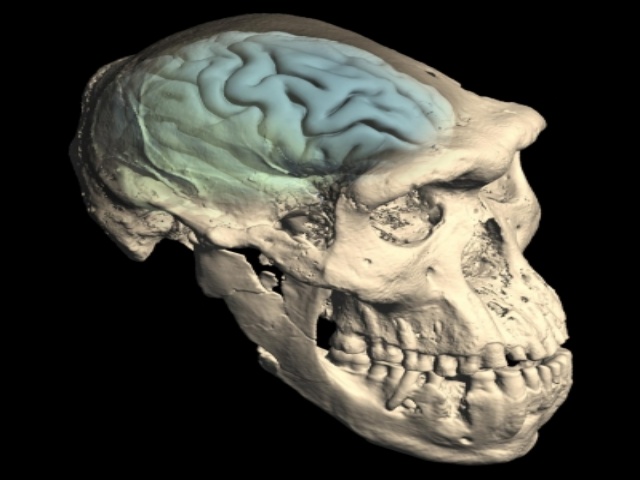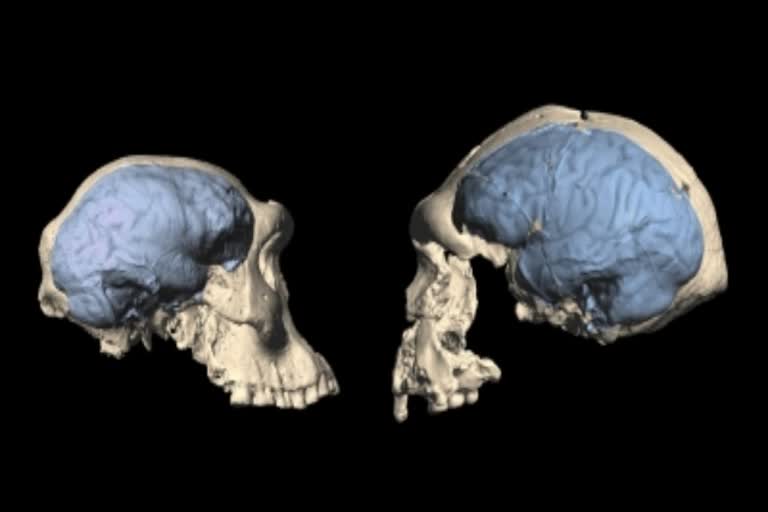- The first ancestors from the genus Homo emerged in Africa about 2.5 million years ago and walked upright, but had primitive ape-like brains -- only about half the size of present-day humans, said the researchers from the University of Zurich (UZH) in Switzerland.
Besides the size, the team also found that their location and organization of individual brain regions differed from the modern human brain. "The features typical to humans are primarily those regions in the frontal lobe that are responsible for planning and executing complex patterns of thought and action, and ultimately also for language," said Marcia Ponce de Leon, from the varsity's Department of Anthropology.
Since these areas are significantly larger in the human brain, the adjacent brain regions shifted further back, de Leon noted. The team used computed tomography to examine the skulls of Homo fossils that lived in Africa, Georgia, and Java in Indonesia 1 to 2 million years ago. They then compared the fossil data with reference data from great apes and humans.




